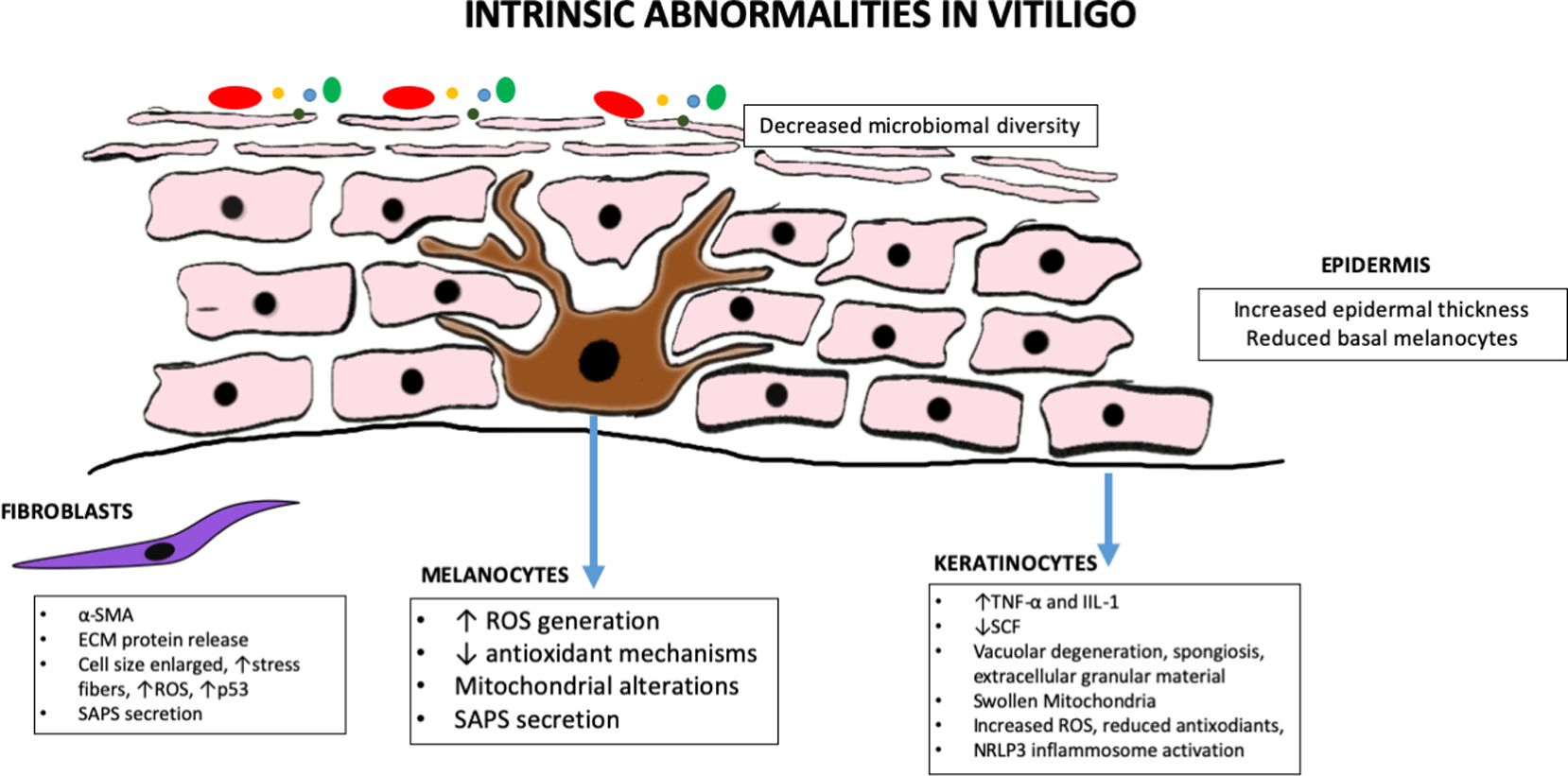
There are two major types of vitiligo: Segmental vitiligo and Non-segmental vitiligo
Types of Vitiligo: Which One Do You Have?
Vitiligo can appear in a variety of degrees in different people. Every patient’s pigment loss progresses at a different rate and severity. In many situations, the illness begins as a tiny patch and progresses to larger patches as time passes.
Some people’s white spots do not widen and remain the same for years, but then new regions appear out of nowhere. Vitiligo is different for every individual because there isn’t just one type of vitiligo.
Types of Vitiligo
So to understand what kind of vitiligo someone’s suffering from and what should be the treatment for vitiligo has been divided into two major types.
These are:
- Localized or Segmental Vitiligo
- Focal
- Generalized or Non-Segmental Vitiligo
- Acrofacial
- Vulgaris
- Universal
Let us discuss each of its types one by one.
Localized or Segmental Vitiligo
Segmental vitiligo is a rarely localized vitiligo that is distinguished by its subcostal distribution. It’s usually unilateral and asymmetrical, and it never crosses the body’s midline. Depigmentation patches spread swiftly in the afflicted dermatomes and then stop spreading in this stage of the disease.
Identifying Segmental Vitiligo
Segmental vitiligo is distinguished by localized patterns on the skin over a period of 6-24 months, followed by quick stabilization, due to its early onset and progressive growth of patches.
Symptoms
The only symptom of segmental vitiligo is the appearance of flat white patches or spots on the skin. When your skin is exposed to the sun, you may see spots or patches for the first time. Other indicators include
- Spots or areas that are slightly pale and soon turn white
- Patches or a place with an irregular shape
- Inflamed margins with a little red tone, which might cause itching.
Most of the time, segmental vitiligo does not produce any skin irritation, discomfort, or soreness.
Types of Segmental Vitiligo
Segmental vitiligo further has only one type:
Focal vitiligo: One or more patches in a small area that do not follow a segmental distribution but are localized in a particular area.
Generalized or Non-Segmental Vitiligo
Non-segmental vitiligo is a depigmented skin condition characterized by inherited, progressive, and depigmented skin, mucosa, and hair lesions. The autoimmune loss of melanocytes from the affected areas is thought to be the main cause.
Identifying non-segmental Vitiligo
Non-segmental vitiligo is diagnosed when white patches on an individual’s body are symmetrical rather than asymmetrical.
Non-segmental vitiligo is the most common type of vitiligo. Vitiligo affects roughly 0.5 to 2% of people worldwide, and it is non-segmental 90% of the time.
Symptoms
This condition doesn’t cause discomfort. Sometimes, however,
- The patches may induce itchiness because of inflammation.
- Individuals may have a few small white spots on their bodies. In contrast, others may have large patches joining together from different regions.
Besides, from a person’s face, neck, and hands, non-segmental vitiligo can develop on the arms, around the eyes, knees, elbows, feet, mouth, armpit, and groin.
Types of Non-Segmental Vitiligo
Non-segmental vitiligo has become a catch-all phrase for any type of vitiligo not defined as segmental vitiligo.
Subtypes of generalized vitiligo include the following:
Acrofacial vitiligo: In this type of vitiligo depigmentation occurs on the tips of the fingers and periorificial areas i.e., chin, upper lip, and eyelids.
Vulgaris vitiligo: This is characterized by unorganized, asymmetrical, and scattered patches distributed all around the body.
Universal vitiligo: In this type, very little skin is left with pigmentation and the body loses almost all of its shade and color. This is a very rare case of vitiligo.
Segmental Vitiligo Vs Non-segmental Vitiligo
You will find a few more differences listed between the two below:
| Segmental Vitiligo | Non-segmental Vitiligo |
| Comes in an early age | Spreads rapidly and stabilizes |
| Its nature is asymmetrical and unilateral | Comes unpredictably at any age |
| Comes at an early age | Takes a long and radical course |
| Predictable spread of white patches | Its nature is symmetrical and bilateral |
| In the early stages, high numbers of white hairs are observed. | White hairs present only in the affected area |
| Not an autoimmune disease | Often associated with autoimmune disease |
Although the difference between the 2 remains clear, you would like to recollect that vitiligo isn’t contagious.
Treatment for Vitiligo
Vitiligo is a highly variable disease that cannot be treated in the same manner as every other illness. The treatment for vitiligo is dependent on its severity and extent.
A doctor may prescribe a variety of therapies, including
- Topical creams
- Medicine i.e Corticosteroids
- Light therapy
- Skin grafts
- Surgery
- Herbs
Herbs and Topical creams are the best non-invasive and organic treatments for vitiligo. The fusion of both is the way to go. To get quick and genuine results, you can use herbal products like Vitiligo Organics.
Vitiligo Organics is an all-natural product that uses effective herbs and scientifically formulated blends to treat vitiligo, segmental or non-segmental.
Conclusion
There are two types of vitiligo: segmental and non-segmental. Segmental vitiligo is unilateral while non-segmental vitiligo is bilateral and symmetrical.
The cause of vitiligo is still unknown, but it’s believed to be an autoimmune disorder. Treatment options include topical creams and light therapy. For rapid improvement, vitiligo organics is the perfect cream for vitiligo treatment.
The best course of action is to contact a health professional and get yourself or your loved one diagnosed with the type of vitiligo they have.






